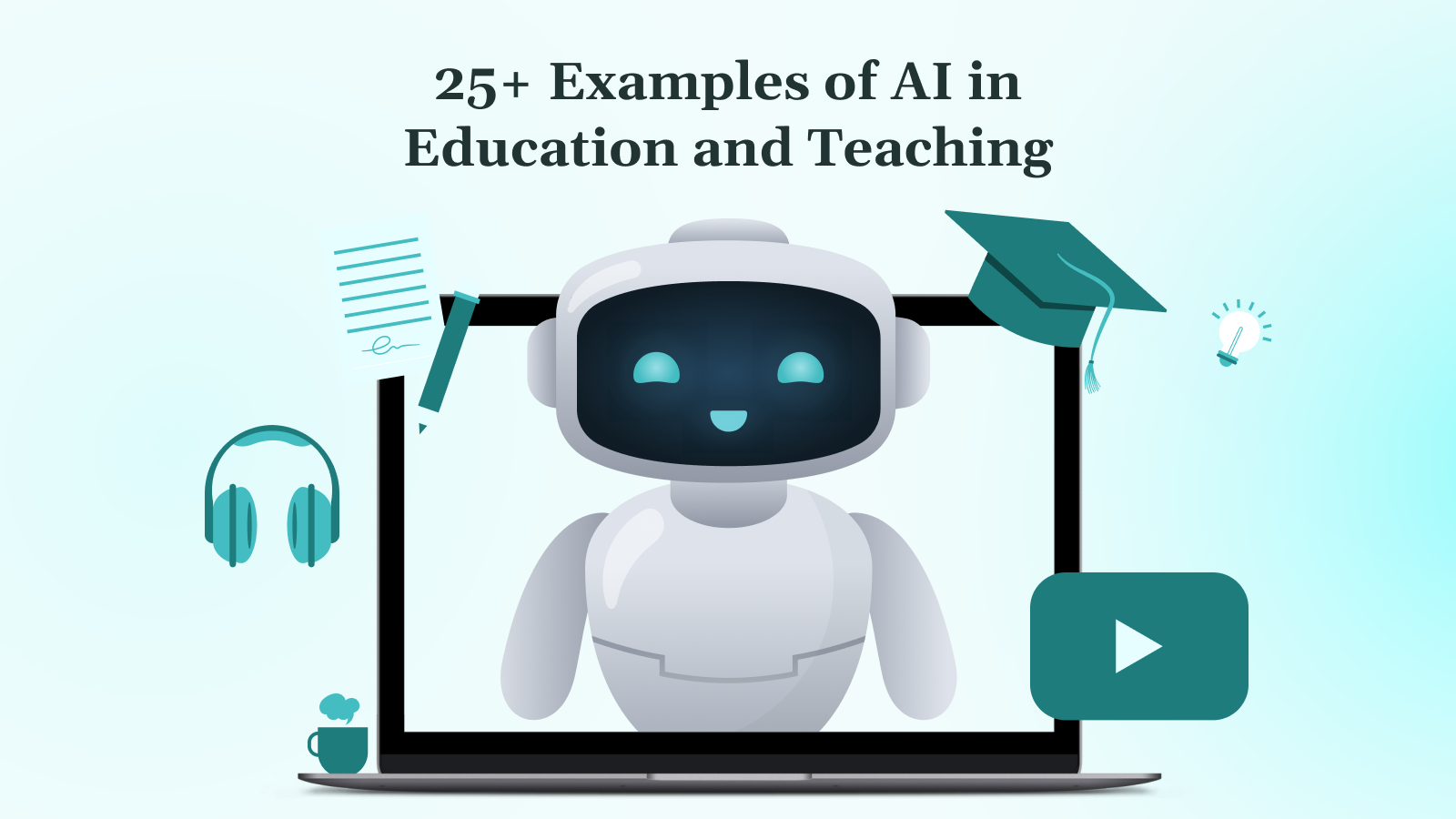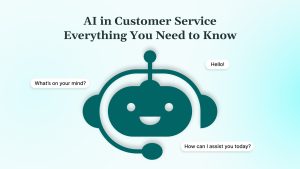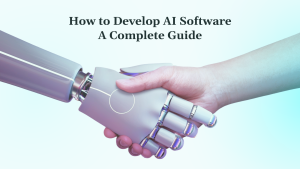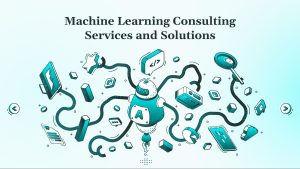How is AI reshaping education and making a difference for students, teachers, and schools? In 2025, almost all students (92%) now use AI in some form, with 88% utilizing GenAI for assessments. Education leaders are not left behind either, as47%of them incorporate AI into their daily work.
With AI becoming integral to learning, it is transforming how we educate, personalize teaching, and engage students. Yet, many still wonder how AI is being used across different aspects of education.
We understand that implementing AI can be a challenge, and the potential it holds often feels unclear. But whether it is improving classroom experiences, streamlining administrative tasks, or enhancing assessments, AI is making a significant impact.
This blog breaks down how AI is revolutionizing education. We will explore its benefits, provide real-world examples, and address the challenges educators face, offering potential solutions to make AI adoption smoother for schools.
Key Takeaways:
- AI personalizes education by customizing content to match the learning style and pace of each student, enhancing outcomes.
- Teachers benefit from AI automating grading, administrative tasks, and behavior management, increasing efficiency.
- Real-world examples demonstrate that AI-driven tools, such as chatbots and adaptive learning platforms, are transforming classroom dynamics.
- AI, paired with VR and IoT, creates more immersive and interactive learning environments.
- Key challenges, such as privacy concerns, bias, and high costs, can be mitigated through strategic AI integration.
Benefits of AI in Education
AI is reshaping education by personalizing learning, enhancing efficiency, and providing valuable insights to students, educators, parents, and school management. With AI, education becomes more adaptive and accessible, making it easier for all involved to succeed. Here are the benefits of AI in education:
For Students

- Personalized Learning: AI adapts the content based on the learning style and pace of each student, helping them to learn more effectively. DreamBox and Smart Sparrow provide real-time lesson adjustments, ensuring individualized learning progress.
- Immediate Feedback: AI systems provide instant feedback on assignments, enabling students to identify their strengths and areas for improvement immediately.
- Enhanced Engagement: Platforms like Kahoot! Gamify learning, turning lessons into interactive and engaging experiences. This fosters greater student motivation and active participation.
- Improved Accessibility: AI-driven technologies, like speech-to-text and text-to-speech, help students with disabilities access educational content, making learning more inclusive.
- Improved Self-Educational Skills: With instant feedback and personalized learning, students can develop critical thinking, problem-solving, and creativity, skills that are increasingly crucial for progress.
For Educators
- Automated Administrative Tasks: AI reduces the workload for educators by automating tasks like grading, scheduling, and report generation. This frees up time for teachers to focus on student interactions.
- Actionable Insights: AI provides data-driven insights into student performance. Teachers can identify learning gaps and adjust their teaching strategies to meet the individual needs of each student.
- Professional Development: AI suggests personalized learning resources and courses, enabling educators to enhance their teaching skills and stay current with emerging methods.
- Behavior Management: Platforms like Classcraft track student behavior, using AI to reward positive actions. This helps maintain a productive, engaged classroom environment.
- Better Engagement: AI generates insights into learning goals and interests of students, enabling teachers to create more engaging and relevant lessons.
For Parents
- Real-Time Monitoring: AI offers detailed insights into a child’s academic progress. Parents can easily track the performance of their ward and stay involved in their education.
- Early Intervention: Predictive AI tools help parents spot when their child may be struggling, allowing them to intervene early and provide the necessary support.
- Enhanced Communication: AI-powered platforms improve communication between parents and teachers, ensuring regular updates and a collaborative approach to student development.
For School Management
- Data-Driven Decision Making: AI analyzes vast amounts of student data, enabling school administrators to make informed decisions about curriculum and resource allocation.
- Optimized Resource Allocation: AI optimizes scheduling, staff allocation, and resource management, resulting in more efficient and cost-effective school operations.
- Reduced Teacher Burnout: By automating repetitive tasks, AI reduces teacher workload, allowing them to focus on engaging with students and improving job satisfaction.
- Scalability: AI enables schools to scale their educational programs, providing personalized learning experiences for an increasing number of students without compromising quality.
AI integration into education is already revolutionizing the way students learn, teachers teach, and parents and school management stay involved. With its ability to make education more efficient and inclusive, AI is poised to continue shaping the future of learning.
Having explored the benefits of AI, next, we will examine real-world examples that demonstrate its impact in education.
Also read: Unveiling the Potential of UPI Payments: A Game-Changer in Indian Digital Transactions.
25+ AI in Education Examples
AI is rapidly transforming education by introducing innovative tools that cater to various aspects of learning. From personalized tutoring to enhancing classroom management, AI is transforming the way students engage with their education.
In this section, we explore over 25 unique and practical examples of AI technologies currently being used in educational settings.
1. Adaptive Learning Platforms
Adaptive learning platforms utilize AI to tailor lessons to each student’s pace and ability. These platforms personalize the learning experience by evaluating the strengths and weaknesses of students, delivering tailored content that optimizes learning outcomes. The AI-driven systems continuously monitor progress, making real-time adjustments to ensure effective learning.
An example of this is StepWise by Querium. It is an AI-powered platform designed for STEM education. It uses AI analytics to assess student progress and deliver personalized instruction. The platform includes interactive lessons, adaptive quizzes, and instant feedback to keep students engaged.
2. Assistive Technology for Disabilities
Assistive technology in education supports students with disabilities by providing tailored solutions to overcome learning barriers. AI-powered tools help make learning more accessible, especially for students with dyslexia, by offering features that simplify and enhance their learning experiences.
A prominent example is Number Scan by DEVtrust, an AI-enabled online quiz platform designed for autistic learners. It offers features such as simplified navigation, accessible design, and categorized quizzes (Numerical, Pictorial, Spatial) to support diverse learning needs. Its inclusive design led to a 40% increase in user satisfaction and a 35% boost in quiz engagement and completion rates.
3. Data and Learning Analytics
AI in data and learning analytics enables educators to track student progress and identify areas for improvement. It offers insights into learning patterns and provides actionable data to refine teaching strategies.
For instance, an educator can utilize AI-driven learning analytics to monitor the performance of students across math, science, and social studies. The system identifies trends in the data, pinpointing students who are struggling with trigonometry. With this information, the educator provides personalized content and targeted exercises to address specific gaps, thereby improving student performance and engagement.
4. Curriculum Planning
AI aids in curriculum planning by analyzing student data and adapting course material. It supports the creation of personalized learning experiences, ensuring the curriculum evolves based on student needs.
For example, a school district uses AI to evaluate student performance across multiple grade levels. The AI identifies areas where students consistently underperform, such as reading comprehension. Based on these insights, the district revises the curriculum to allocate more time for reading comprehension activities, ensuring students gain the skills they need to succeed.
5. Classroom Management Tools
AI-driven classroom management tools enable teachers to track student behavior and engagement, promoting a productive learning environment. They help maintain a positive environment by providing real-time feedback and actionable insights.
One of the most notable here is Khan Academy’s personalized learning platform. It uses AI to analyze the progress of students across various subjects. By understanding how each student is performing, the system enables teachers to adjust their approach to better suit individual needs, thereby keeping students engaged and motivated throughout lessons.
6. Automated Grading
AI-powered grading tools significantly reduce the workload of educators by automating the grading process. They improve consistency, accuracy, and efficiency, ensuring fair assessments across all student submissions.
An example is the AI grading tool by Gradescope, which automatically analyzes and grades assignments based on user-defined rubrics. It evaluates multiple types of assignments, including essays and coding projects, saving educators valuable time while providing students with objective and detailed feedback.
7. AI Chatbots and Virtual Assistants
AI chatbots and virtual assistants provide students with personalized support, assisting them with homework, assignments, and subject-related queries. These tools support learning outside of classroom hours, making it more accessible.
An example of this is Khanmigo, which Khan Academy developed. It is an AI-powered, always-available chatbot that operates within the interface of the platform. It assists students with real-time coaching, test preparation, and problem-solving, ensuring round-the-clock support for learners.
8. Proctoring Systems
AI-powered proctoring systems are transforming the way exams are monitored, ensuring both security and fairness. Traditional proctoring methods rely heavily on human invigilators, but AI-driven systems offer a more efficient and scalable solution, capable of monitoring multiple test-takers simultaneously.
These systems detect suspicious activities by analyzing behavior patterns, such as irregular eye movement. They also monitor inconsistent keystrokes to ensure academic integrity is maintained.
An example of this is Alvy, the next-gen AI proctoring agent. It analyzes test-taker behavior, context, and patterns to make more informed decisions about cheating. These systems utilize computer vision and behavioral analytics to track eye movements, facial expressions, and typing patterns, enabling the identification of potential cheating.
9. Edutainment and Gamification
Edutainment combines entertainment with education by incorporating gaming elements into the learning process. AI drives personalized experiences, adjusting difficulty and rewards based on student progress. These gamified systems increase motivation, engagement, and retention.
For instance, a high school teacher uses an AI-powered platform to gamify math lessons. As students progress through levels, the system adapts the difficulty to their learning pace, ensuring engagement and mastery.
10. Virtual Campus Activities
AI enhances virtual campus activities, creating opportunities for students to engage beyond classrooms. These platforms host online events, clubs, and social activities, fostering community building. AI personalizes event recommendations based on student interests.
For example, a college utilizes AI to organize virtual club activities, enabling students to participate in global meetings. The system analyzes student preferences and suggests relevant clubs or events, ensuring increased participation.
11. Interdisciplinary Learning
AI supports interdisciplinary learning by integrating multiple subjects into one curriculum. It enables connections between different fields, fostering a deeper understanding. This approach encourages creativity and critical thinking.
For example, an AI system suggests interdisciplinary projects that combine science and art. Students collaborate on projects that integrate scientific research with creative presentations, providing a well-rounded learning experience.
12. Simulating Real-Life Scenarios
AI-powered simulations create real-world scenarios for practical learning without risks. Students can experiment and make decisions in virtual environments, honing their problem-solving skills. These simulations foster experiential learning.
For instance, in a medical school, AI is used to simulate surgeries, allowing students to practice techniques. Students can practice procedures in a safe virtual space before performing them on real patients.
13. Parent-Teacher Communication
AI improves parent-teacher communication by providing real-time feedback on student performance. It sends updates, grades, and insights directly to parents. This strengthens collaboration between teachers and families.
For instance, a school can implement an AI platform that notifies parents about their child’s performance. Parents receive weekly summaries, attendance records, and upcoming deadlines, enhancing involvement in their child’s academic journey.
14. Learning Management Systems (LMS)
LMS platforms powered by AI simplify the management of educational content, assessments, and student interactions. These platforms automate tasks, such as grading, tracking progress, and delivering customized learning experiences.
A notable tool here is EdTech AI by DEVtrust, an AI-driven platform that streamlines curriculum creation and performance tracking. Teachers use AI tools for efficient class management and real-time progress monitoring. The platform reduced administrative overhead by 50%, leading to a 30% increase in overall operational efficiency.
15. Exam and Quiz Preparation
AI-powered tools can generate diverse questions and practice tests tailored to the abilities of students. They create multiple-choice, fill-in-the-blank, or open-ended questions based on existing content. This simplifies the preparation process and enhances the accuracy of assessments.
For instance, a teacher uses AI to generate quizzes for a math class, focusing on problem-solving skills. The tool creates a variety of questions, allowing students to practice specific concepts at their own pace.
16. Visual Learning Aids
AI enhances visual learning by creating diagrams, illustrations, and interactive visuals that help clarify complex concepts. These tools transform abstract ideas into easily digestible visuals, supporting a range of learning styles.
For example, a science teacher uses AI to generate visual diagrams of the human circulatory system. The interactive visual helps students grasp the concept by allowing them to explore how blood flows through the heart and veins.
17. Student Feedback and Corrections
AI tools provide real-time feedback on assignments, helping students improve their work efficiently. They identify areas for improvement and suggest actionable corrections based on data-driven insights.
For instance, after submitting an essay, students receive AI-generated feedback on structure, grammar, and clarity. The AI highlights weak areas, offering recommendations for improvement, enabling students to enhance their writing.
18. YouTube Video Comprehension
AI analyzes YouTube video content and generates comprehension questions, quizzes, and summaries to enhance learning and comprehension. This approach enhances video-based learning by ensuring students understand key concepts and retain information effectively.
For instance, a teacher assigns a YouTube video on climate change and uses AI to generate comprehension questions. Students answer the questions after watching the video, reinforcing their understanding of the topic.
19. Creating Online Learning Resources
AI automates the creation of online learning resources, including worksheets, study guides, and flashcards. These resources are tailored to meet each student’s individual learning needs.
For example, a teacher uses AI to generate a set of flashcards on historical events for students to study. The AI ensures that the cards focus on each student’s weak areas, promoting efficient learning and improvement.
20. Facilitating Virtual Field Trips
AI-powered virtual field trips offer immersive, interactive experiences that simulate real-world exploration. Students can explore historical sites, museums, and natural wonders, broadening their learning horizons.
For example, a geography teacher uses AI to facilitate a virtual field trip to the Great Barrier Reef. Students virtually explore the ecosystem, observing marine life and understanding environmental conservation efforts.
21. Writing Individualized Education Program (IEP) Goals
AI can assist in creating personalized, measurable IEP goals tailored to the unique learning needs of students. It evaluates past performance and learning trends to generate specific objectives and interventions. These goals ensure targeted support for students with special needs.
For instance, an educator uses AI to create IEP goals for a student with dyslexia. The AI analyzes the reading performance of students, suggesting specific language objectives to enhance reading skills over the semester.
22. Automating Self-Assessments
AI streamlines the creation and grading of self-assessment tools, providing students with immediate feedback. This helps students reflect on their learning progress and identify areas needing improvement. The system can also tailor the assessment to individual learning styles.
For example, A teacher sets up an AI-powered self-assessment for students to evaluate their understanding of algebra. The AI instantly scores responses, providing personalized feedback on where students need more practice.
23. Professional Development for Educators
AI identifies specific learning needs for educators and recommends personalized training materials and resources tailored to their individual needs. It offers a dynamic learning path, ensuring professional growth in areas like pedagogy, classroom management, and technology integration.
For example, A teacher accesses an AI-based platform to find courses on advanced classroom management strategies. The system recommends modules based on the teacher’s current skills and needs, helping to develop stronger leadership skills in the classroom.
24. Virtual Tutors
AI-powered virtual tutors offer on-demand support to students, guiding them through lesson concepts and homework assignments. They offer real-time feedback and explanations, adapting to the student’s pace and understanding.
For instance, a student uses an AI-powered virtual tutor to get help with calculus homework. The virtual tutor provides step-by-step explanations, helping the student understand concepts and solve problems independently.
25. Supporting Homework Assistance
AI tools assist students by offering hints, explanations, and detailed solutions for homework problems. These tools are designed to guide students without directly providing answers, encouraging independent problem-solving.
For example, if a student is struggling with history assignments, the AI tool can break down complex historical events into more manageable components. The tool provides a timeline and contextual information, helping students understand the material without simply providing the answer.
26. Managing Administrative Workflows
Managing administrative workflows can be time-consuming for educational institutions. AI-powered tools streamline processes such as scheduling, student registration, and progress tracking. These tools enhance efficiency and help administrators focus on strategic decision-making.
One of the most prominent tools here is BrainyMate by DEVtrust, which streamlines the management of school administrative tasks. It helps schools create curricula, assign units to classes, and manage student registrations. The platform tracks student progress in real-time, allowing for event management and direct communication between students and teachers.
27. Translation Services
Translation services powered by AI bridge language gaps in education, ensuring inclusivity for all students. AI tools translate educational materials, policies, and communications in multiple languages, enhancing accessibility. These technologies streamline cross-language interaction, enabling non-native speakers to engage more effectively in lessons.
One of the best tools for that is Smartcat AI, which uses AI-driven translation tools to convert educational materials and documents into multiple languages. By leveraging AI-powered tools, Smartcat ensures the accessibility of educational content and communication across diverse languages.
With the examples cleared, it is essential to discuss additional AI technologies that operate in the education sector.
More AI in Education Examples and Technologies
AI streamlines school operations by automating tasks such as scheduling, grading, and resource allocation. These tools help manage data, optimize workflows, and enhance decision-making, allowing educators and administrators to focus more on student engagement.
| Category | Technology Name | How it Works |
| Learner-Supporting AI | Attention & Emotion Detection | Monitors student attention and emotional responses to improve engagement. |
| Teacher-Supporting AI | Web-Scraping Tools | Gather educational content from multiple sources to keep lessons current and up-to-date. |
| Intelligent Scheduling & Planning | Automates class scheduling and optimizes course material allocation. | |
| Institution-Supporting AI | Admission Management Platforms | Automates student admissions, simplifying the process for schools. |
| Resource Planning Systems | Optimizes resource allocation based on current and future student needs. | |
| Dropout Prediction Tools | Identifies at-risk students and suggests interventions to reduce dropout rates. | |
| Enrollment Management Tools | Automates enrollment processes, streamlining student registration and enrollment. | |
| Campus Safety & Security Tools | Monitors campus activity using AI to ensure student and faculty safety. |
These AI technologies work together to create an ecosystem that supports students, assists educators, and streamlines administrative tasks.
DEVtrust specializes in custom-built AI solutions for education, from AI-powered tutoring platforms to smart content generation tools. Our expertise in full-stack development, cloud architecture, and seamless API integrations ensures scalable and interactive learning experiences. While AI is impactful, emerging technologies like VR and IoT enhance its effectiveness in education. Next, we will discuss them in detail.
Emerging Technologies to Pair with AI in Education
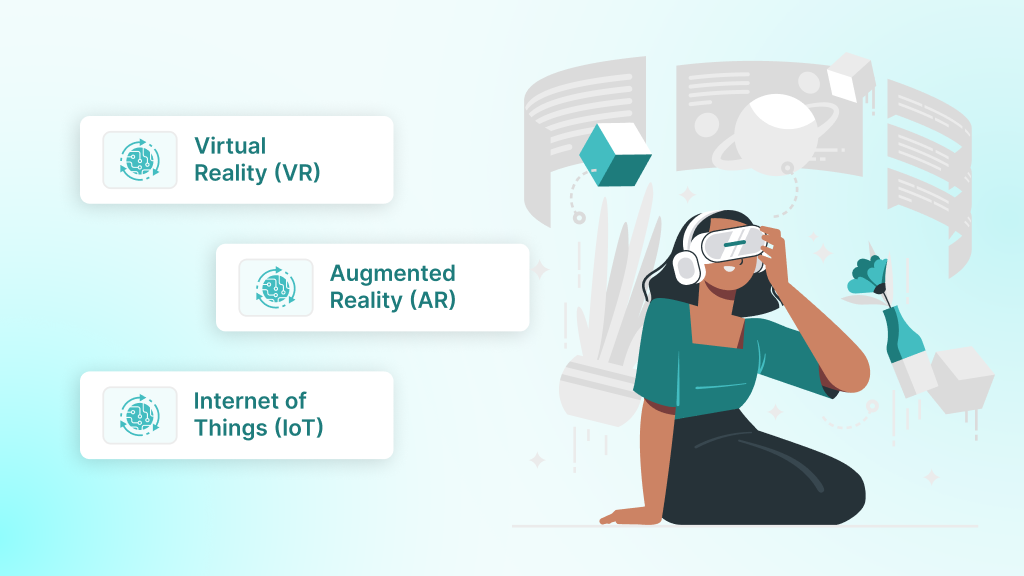
As AI continues to evolve in education, pairing it with other emerging technologies enhances its potential. These technologies can amplify the effectiveness of learning, making education more interactive, immersive, and data-driven.
Virtual Reality (VR):
Virtual reality provides a fully immersive 3D simulated environment that replicates real-world scenarios. In education, VR provides engaging experiences for complex subjects such as anatomy, engineering, or history.
AI personalizes VR experiences by adjusting scenarios based on student interactions and learning progress, making the simulations more effective and tailored to individual needs. It helps students grasp difficult concepts by interacting with 3D models and simulations, fostering better understanding through hands-on learning.
Augmented Reality (AR):
Augmented reality overlays digital information onto the physical world, enhancing interactions and experiences. AR in education enables students to interact with both physical and digital elements, fostering engagement.
By superimposing educational content onto physical objects, students can explore subjects in a more dynamic way.
Internet of Things (IoT):
The Internet of Things refers to interconnected devices that collect and exchange data. In education, IoT enables smart classrooms where devices like sensors, cameras, and projectors can be controlled remotely.
Teachers and administrators can collect real-time data on student engagement, room conditions, and attendance, helping them optimize the learning environment. As AI and new technologies continue to evolve, new challenges arise. Let us address them and explore solutions.
Potential Challenges and Solutions for Implementing AI in Education
As AI continues to revolutionize education, there are several challenges that educators and institutions must address. While the advantages are significant, their implementation presents obstacles that require careful consideration. Here is a breakdown of the challenges and potential solutions to ensure the smooth integration of AI in the education sector.
1. Privacy and Security Concerns
AI systems collect a vast amount of student data, which raises privacy concerns. Data leakage or unauthorized access can jeopardize personal information. Schools and institutions must adopt stringent data protection measures and comply with privacy laws, such as the GDPR.
Encryption and access controls can also help secure sensitive data. Schools should ensure that AI systems are transparent about data usage and provide options for parental consent.
2. Potential Bias in AI Algorithms
AI algorithms can unintentionally exhibit biases, particularly when trained on incomplete or non-diverse datasets. This can lead to unfair outcomes, such as non-native English speakers being incorrectly flagged for cheating.
To solve this, AI systems must be tested on diverse datasets. Regular updates and audits should be performed to minimize bias and ensure fairness. Moreover, educators should remain vigilant and supplement AI findings with human judgment.
3. Reduced Human Interaction
AI may reduce the time students spend interacting with teachers, potentially affecting their social and emotional development. To address this, AI should be used to automate administrative tasks, freeing up teacher time for direct interaction.
Teachers must maintain a balance between AI usage and human engagement to foster meaningful relationships with students. Schools can utilize AI to assist teachers in areas where they need support, such as grading or lesson planning.
4. High Implementation Costs
The initial cost of AI systems can be prohibitive for many schools, especially those in underserved areas. To address this, governments and educational organizations should provide funding or grants to support the adoption of AI.
Schools can also start with basic, cost-effective AI tools and gradually scale up their use. Additionally, cloud-based AI solutions can reduce costs associated with infrastructure and maintenance, making AI more accessible.
5. Academic Misconduct
AI-driven cheating tools present a risk of academic dishonesty. If students use AI to complete assignments or exams dishonestly, it undermines the integrity of the learning process. Institutions must invest in AI-powered proctoring systems and plagiarism detection tools to maintain academic integrity.
Educators should also promote a culture of ethical learning and teach students about the responsible use of AI. Clear guidelines and strict enforcement will help prevent misuse.
6. Unpredictability and Inaccurate Information
AI is only as reliable as the data it processes. If the data fed into AI systems is inaccurate or biased, the results will also be inaccurate or biased. To mitigate this, educational institutions should validate the data used to train AI algorithms.
AI models should be continually updated with accurate and current information. Teachers should also be trained to critically assess AI-generated results and use them as a supplementary tool, rather than as the sole decision-maker.
At DEVtrust, we simplify AI adoption in education with tailored solutions that meet the unique needs of each institution. Our expertise spans scalable cloud architecture, AI-powered tutoring platforms, and intelligent learning management systems. With DevOps and continuous integration, we ensure a seamless transition while addressing concerns related to privacy, bias, and cost.
Conclusion
AI is revolutionizing education by enhancing learning experiences, streamlining administrative tasks, and boosting student engagement. The integration of AI technologies, from personalized learning platforms to intelligent tutoring systems, brings immense value to students, educators, and institutions alike. While there are challenges, such as privacy concerns and high implementation costs, the benefits far outweigh them. The role of AI in transforming education is poised to grow even further.
DEVtrust specializes in custom software development, offering AI-driven solutions tailored to meet all your edtech needs. Our full-stack product development, API integrations, and cloud architecture enable the creation of scalable, modern systems customized to your specific needs. Whether you are looking for an AI-powered LMS or advanced AI chatbots, DEVtrust has the expertise to bring your vision to life.
Partner with DEVtrust for scalable, efficient solutions. Let us build your next big idea.
25+ Examples of AI in Education and Teaching
Explore AI in education examples and learn how AI tools are enhancing personalized learning, improving classroom efficiency, and supporting educators.
Contact Us